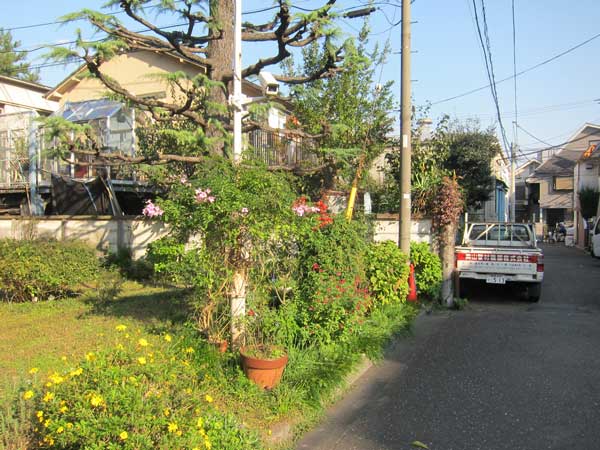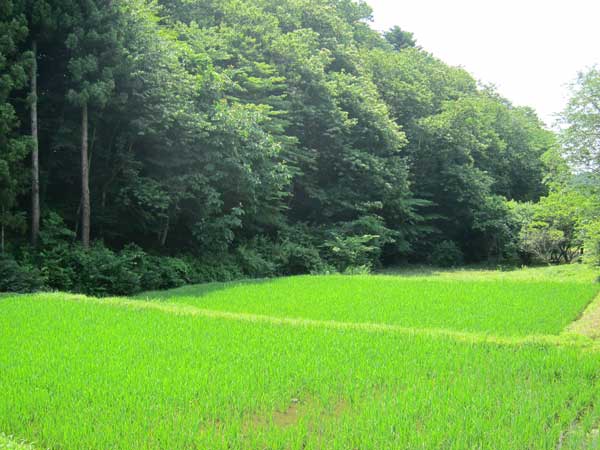
花壇の剪定の前と後の写真。この庭はビルの管理人と退職した夫婦が世話をしています。上の写真は、10月で、葉と花が多いです。11月は、隣の壁が見えます。剪定の後で、もっと明るくなりました。冬も毎月、花が咲いています。
I like this before and after photo set. It shows an apartment building green space that sits between the ten story building and its two story neighbors, homes and a plumbing supply business. It borders a small street that is mostly pedestrian.
The garden has a mix of flowering vines, bushes, bulbs, and a row of pine trees that were probably planted 35 or 40 years ago. The utility pole support is borrowed infrastructure for training a vine upwards.
The photo above was taken October 24, 2011, and the one below November 23, 2011. Above you can see all the fullness of summer: lush foliage, pink and red flowers at every height level, a blurring of the boundary with the neighbor’s garden.
A month later, the 3 story tree has been heavily pruned, which lets light in during the cold months. All the plants have been cut back, and you can see the wall separating the properties.
The maintenance is a mix of semi-professional gardeners hired by the apartment building and a retired couple living in the garden apartment. Although far more restrained in winter, the garden continues to bloom in every month, no doubt because of their efforts.




